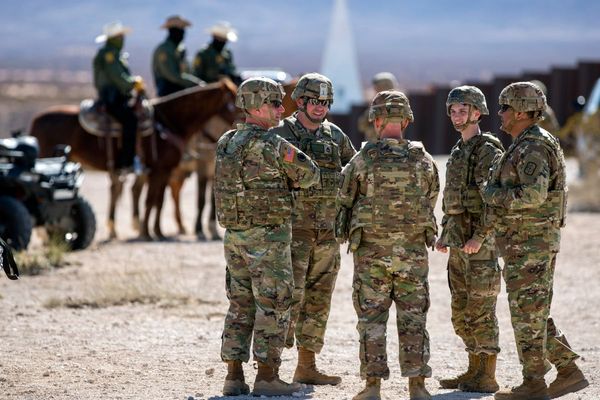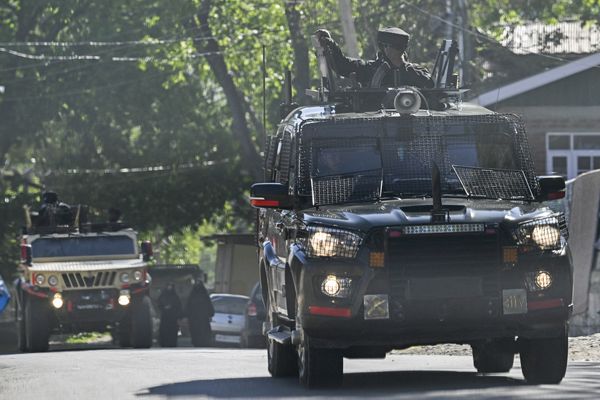Convincing anyone to give Final Fantasy 14 the time of day is tough. Those critically-acclaimed-free-trial memes roll off the tongue easily enough when you’re already at home in Square Enix’s MMORPG, yet folks on the receiving end likely see little more than an enormous time sink ahead of them. The mere notion of plowing through five RPG’s worth of sprawling landscapes, high-stakes battles, and seemingly endless cutscenes would probably turn me off hadn’t been there from the start. By Endwalker’s curtain call, every fan will question if the journey was worth it.
Not in the disappointing Game of Thrones series finale kind of way – more like a sincere nudge encouraging you to think about everything that came before. Final Fantasy 14’s fourth expansion is rife with electrifying white-knuckle trials, hauntingly beautiful landscapes, wildly imaginative new job classes, and countless other facets that make up this excellent game. Yet Endwalker’s chronicling of how Etherys defiantly stands tall opposite the piercing glare of nihilism is most captivating of all – especially when it asks the same of you.
That’s easier said than done when the skies rain fire and everyday folk contort into unholy abominations hellbent on swallowing former neighbors whole. An apocalyptic ballad echoes across Etherys, releasing a miasma of pain and suffering one deadly note at a time. Nobody knows who is belting out the tune aside from Endwalker itself, which has no reservations in dragging poor sods like me across blood-soaked battlefields to discover the sinister songster’s identity.
Imagine my surprise when one of those stunning locales was Garlemald, an imperial nation at the forefront of virtually every major conflict in Final Fantasy 14. Long had I fantasized about storming across its icy tundras towards the capital city’s gates, eager to dish out some well-earned payback for an empire’s rabid, forceful growth. Yet this once thunderous war machine is more akin to a lawnmower choking on fumes by the time you reach it in Endwalker. Formerly towering monuments lie broken and bare atop cobblestone streets, while frostbitten bodies encompass every other snowbank. Those still among the living curse me and every other member of the Scions of the Seventh Dawn for desecrating the kingdom’s memory with our so-called filthy footsteps. It’s a lot to take in.
This is largely because Endwalker at least partially wants you to feel sorry for Garlemald and its people, which is unfortunately a pill I could only swallow if someone held my mouth open. Imperialism – specifically the long-lasting and frightening effects on people – has been part of Final Fantasy 14’s overarching narrative for years. Stormblood even had us liberating countries like Ala Mhigo and Doma from Garlean occupation. While that expansion certainly didn’t stick the landing with some of its loftier talking points, Endwalker is a bit too eager to lend these former oppressors a helping hand. At one point, a Garlean boy breaks down after an Ala Mhigan soldier offers him a hot spot of tea to alleviate winter’s cold embrace – my eyes were halfway across the room by the time the melodramatic orchestral strings kicked in.

That’s not to say there aren’t worthwhile conversations about how citizens under an imperial banner can be victims of its own propaganda – far from it. In Shadowbringers, we learn that the Garlean Empire was a construct of Emet-Selch’s villainous design – an idealistic lie he perpetuated for his own personal gain. My issue is Endwalker allows no breathing room to address the subject matter with care. This expansion is staggeringly bold in its goal to wrap up most lingering storylines from Final Fantasy 14’s ten-year lifetime, but everything involving Garlemald shows that ambition crumbles at times. Endwalker’s heart is (rightfully) with how Etherys deals with an impending apocalypse, as is evident in how the Garlean subplot unceremoniously vanishes once you reach the second dungeon.
It wasn’t until my party began our valiant ascent up the Tower of Babil dungeon that I knew Endwalker was firing on all cylinders. Atop its industrial, crimson-hued peaks sat the former Garlean prince Zenos Galvus and his ever-so-punch-worthy-face sidekick, Fandaniel. Final Fantasy 14 has built this insidious duo up as the next big bad for a good while now. Yet the time to confront them comes early, before the halfway mark of Endwalker’s lengthy 50-hour runtime. Anticipation grew in my heart with each rising step. At this point, I, like probably every other Final Fantasy 14 fan, knew that my expectations were about to take a beating — a wonderful, if not emotionally devastating, act Endwalker often partakes in with glee.
Laser-blasting through those metallic hallways as a Sage, Endwalker’s new energy-infused healer job class, is one joyous memory that’ll stick with me for ages. As someone who prefers healing during group content, I was eager to test Sage’s restorative prowess. It’s fitting that Final Fantasy 14’s first healer in over five years has a toolkit that’s an amalgamation of its forebears. Like with Scholar, damage mitigation is a huge part of Sage. You’re not just reacting to a party member’s dwindling life gauge and topping them off – it’s more proactive than that.

Sage has several shielding spells that ensure there’s more breathing room to move about battlefields and dish out damage of your own rather than dedicating a significant amount of time focusing on rejuvenation casts. However, that freedom comes at a cost: it’s hard as nails. Anyone who prefers the breezy, pure-healing focus of White Mage should steer clear, as Sage’s rotations revolve around its Eukrasia skill, which dramatically augments how other spells function. Dosis, for example, goes from a standard offensive beam attack to inflicting damage over time after Eukrasia alters the flow. Never has the combat medic dream been brought to fruition quite like this before.
That’s what cemented my adoration for Sage – casting Eukrasia amid fierce battles results in invigorating on-the-fly decision making. Half the time, I can’t decide whether party-wide shields or single-target attacks would best serve the group. Nothing early on tested that delicate balance for me quite like Anima, the Tower of Babil’s final boss. Yes, arguably Final Fantasy 10’s most infamous summon appears here, with no less of its devastating demeanor. During the fight’s midpoint, Anima will even shove your party towards its monstrous, feral doppelganger who unleashes barrages of punches just like in Final Fantasy 10. The Tower of Babil, perhaps more than any dungeon before it, showcases how expertly Endwalker balances nostalgic hat-tips without them taking center stage.
The Minstrel’s Ballad: Zodiark’s Fall stands as a pristine example of why raiding in Final Fantasy 14 is so damn gripping. Endgame fights in MMORPGs typically lack any narrative bite, showcasing the height of technical gameplay above all else. No doubt that’s important when you’re facing off against some mountainous supreme being, but Endwalker’s trials emphasize both to ludicrously successful results. When Zodiark – an eldritch demigod that’s stood as Final Fantasy 14‘s ultimate baddie for an age – tears open holes in reality, desperately trying to snuff out your flame, it feels personal. It feels as if you know this beast – this terror you’ve heard countless hair-raising tales about. You can even spot some of its moves from the stories you’ve heard. Each platform swirl or party stack mechanic carries weight as if you’re genuinely embodying the warrior of light that Final Fantasy 14 bills you as.

My job of choice for this trial was Reaper, the scythe-wielding DPS new to Endwalker. It’s basically edgelord vibes made manifest. ‘What better way to contend with darkness than by serving him a taste of his own medicine,’ I thought. Jobs in Final Fantasy 14 vary significantly in how difficult they are to master based on many factors, from how easily they can maneuver busy battlegrounds to what’s asked of their skill rotations. Black Mage, for instance, is much more challenging to play than Bard because the latter can pick targets off from a distance with no cast times, while the former, well, can’t. Reaper is one of the easier jobs, without question.
Tussling with Zodiark made me realize how absurdly strong Reapers are, too. Gap-closing targets and avoiding dangerous area-of-effect attacks is a breeze thanks to skills like Hell’s Ingress and Hell’s Egress teleporting you forward and backward, respectively. Slicing Zodiark from stem to stern was no sweat, either, as Reaper’s rotations are relatively easy to execute. Most skills power up the job gauge effortlessly; each slash slowly builds to an applause-worthy crescendo where spectral ghouls open palm slap whatever prey is foolish enough to stand before you. Reaper is thrilling, no doubt, though it’s too powerful right now. Even Zodiark couldn’t offer that much of a challenge.
When the shadowy, alleged harbinger of doom lay dead at my feet, only for the catastrophic spiral on Etherys to intensify, dozens of question marks popped up in my skull. Thrashing a world-beater, in theory, should result in less fire and brimstone, not more. Endwalker rarely spoon-feeds an explanation, and more often than not, it’ll coax reexamination of past events out of you for those answers, be it metaphorically or literally.

Delving far into the past was not on my pre-release bingo card for this expansion, partly because time travel usually makes me involuntarily wince. However, Endwalker’s use of the concept had me beaming from ear to ear as going back to Elpis, the ancient floating island research facility where Final Fantasy 14’s story truly began, was well beyond any foresight of mine. The lush greenery coupled with animal life devoid of suffering emanates euphoric, Garden of Eden-like tones. Familiar faces (some more affable than others) were keen on showing me what made this land so sublime, or their interpretation of it, at least. I nearly forgot the cataclysm business happening in the present for a bit.
Too bad that Elpis loses all luster once Endwalker’s true antagonists reveal themselves.
Finally, the foe I’d sought since the expansion’s inception was before me. After witnessing countless civilizations fall to war, intolerance, environmental collapse, famine, or disease, this villain surmised that existence is pointless. No matter what, everything and everyone dies, and there’s no reprieve from suffering other than non-existence. Endwalker does not pull any punches. I rarely cry while taking in any form of media, but everything this character said hit too hard, and I was bawling.

For as much reverence as I have for Final Fantasy 14’s lead writer Natsuko Ishikawa, she couldn’t have known a pandemic would happen while penning Endwalker in advance. That doesn’t change how astonishingly resonant this story is. Mere months before COVID-19 befell us, I packed up everything, left my hometown, and set off to chase dreams and hopefully find a better life. Little did I know it would be a good 17 months before I saw my family again, and that time between was nothing but misery. They say there’s no reward without risk, and even now, I’m uncertain that my gamble has paid off. So those musings on how brutally indifferent the universe is toward our happiness were, frankly, suffocatingly familiar.
This story doesn’t revel in cynicism, though, no matter what its villain surmises. A smidge of Final Fantasy’s core always suggests that where there is despair, hope will rise to meet it — or throat-punch it into submission. Endwalker’s idyllic sentiment doesn’t necessarily ring true for me in reality, but hell if it doesn’t feel incredible to live out in Etherys.
Wrapping up Final Fantasy 14’s first decade in a satisfactory manner was a Sisyphean task, but one that Endwalker mostly delivers on. For any of this expansion’s fumbles, be they awkward narrative sections or mechanical kinks that still need some ironing out, there are three times as many highs to ride. I can say with conviction that every moment of this journey was worth it.
Written by Kyle Campbell on behalf of GLHF.







